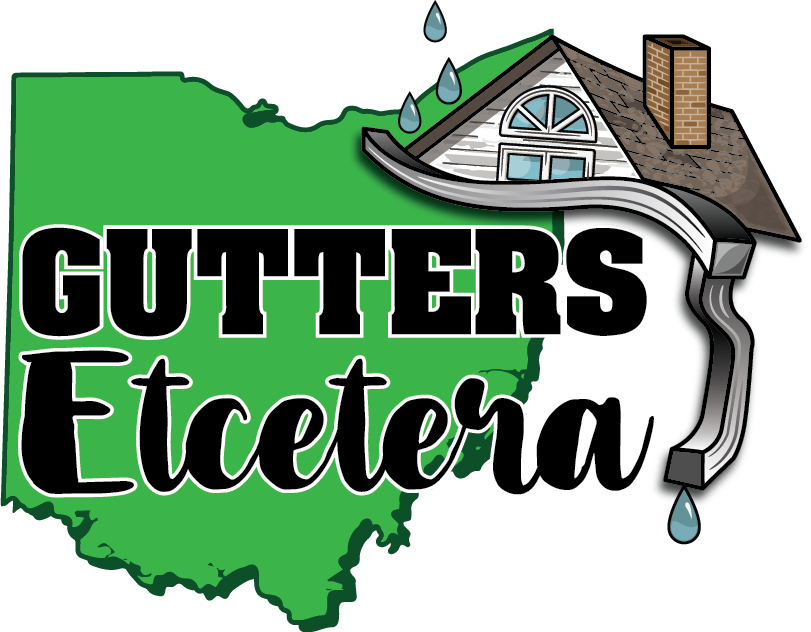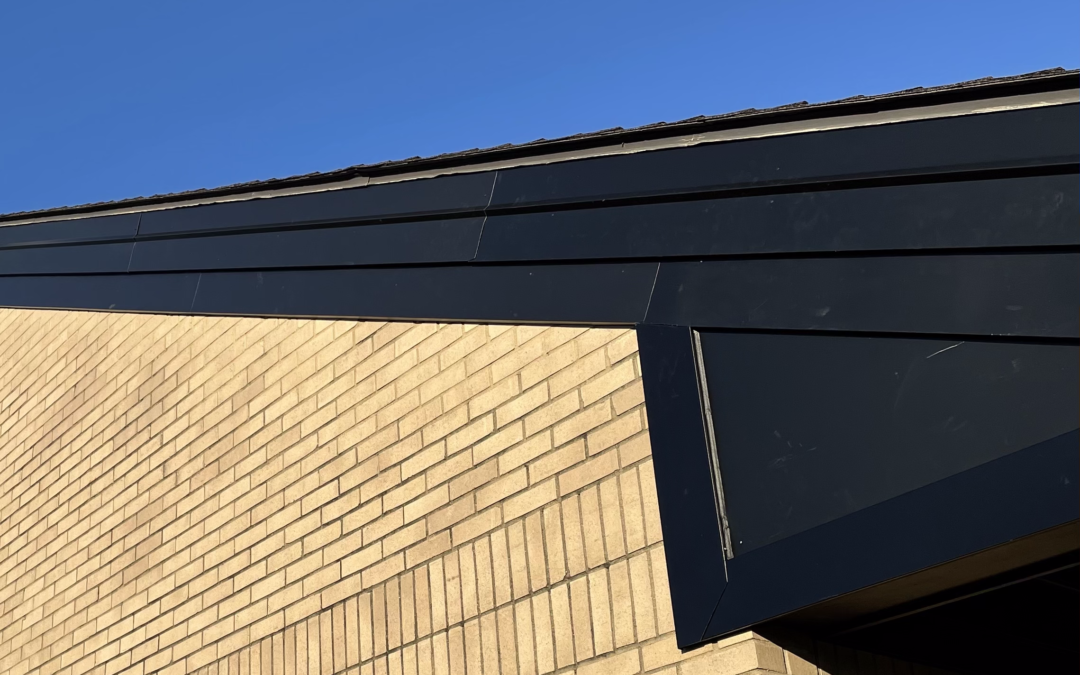Gutters Etcetera from Cincinnati, Ohio, is proud to share an in-depth, purely informational guide on vinyl soffit. This post is designed to help homeowners understand what vinyl soffit is, its benefits, installation tips, maintenance guidelines, and how it compares with other materials—all without making any commitments or promises regarding services.
What is Vinyl Soffit?
Vinyl soffit is a material commonly used to cover the underside of a roof’s overhang, giving homes a finished look while protecting structural elements from the weather. Unlike traditional wood or aluminum options, vinyl soffit is favored for its durability and low maintenance. This material is engineered to resist moisture, rot, and insect damage, making it a practical choice for many homeowners in varied climates, including the humid conditions common to Ohio.
Key Features of Vinyl Soffit:
- Durability: Resistant to common weather challenges like moisture and UV exposure.
- Low Maintenance: Does not require frequent painting or sealing.
- Aesthetic Versatility: Available in a range of colors and styles to complement different architectural designs.
- Cost-Effectiveness: Generally offers a budget-friendly solution compared to some other materials.
Benefits of Choosing Vinyl Soffit
Understanding the benefits of vinyl soffit can empower homeowners to make informed decisions about their home’s exterior. Here are several advantages that highlight why vinyl soffit is a popular choice:
1. Enhanced Curb Appeal
Vinyl soffit provides a clean, streamlined finish along the eaves of a home. It conceals unsightly rafters and adds a layer of visual sophistication to your property. The wide variety of available colors and styles allows homeowners to tailor the look to their personal taste and the overall design of the home.
2. Improved Attic Ventilation
Many vinyl soffit products feature built-in ventilation systems. These perforations facilitate continuous airflow, which helps regulate attic temperatures and reduces the risk of moisture buildup. Improved ventilation is especially valuable in preventing issues like mold and reducing heat accumulation during the summer months.
3. Resistance to Weather Elements
Vinyl is inherently resistant to many common environmental challenges, including moisture, insects, and UV rays. This resilience is particularly beneficial for regions like Cincinnati, where weather patterns can be unpredictable and demanding.
4. Ease of Installation
Vinyl soffit panels are typically lightweight and feature an interlocking design, making them easier to install than some traditional materials. This characteristic makes vinyl an attractive option for DIY enthusiasts as well as professionals.
5. Longevity and Cost Savings
The durability of vinyl soffit means that it often lasts longer than other materials with minimal upkeep. Over time, this translates to savings on maintenance and replacement costs, making vinyl a long-term investment for homeowners.
Types of Vinyl Soffit
Vinyl soffit comes in several different styles, each catering to specific needs and aesthetic preferences. The two main types include:
Perforated Vinyl Soffit
This style includes small holes that allow air to pass through. The built-in ventilation is essential for maintaining a healthy attic environment, reducing moisture, and preventing the buildup of excessive heat.
Solid Vinyl Soffit
In contrast, solid vinyl soffit offers a continuous, unbroken surface without perforations. While this style might not promote airflow as efficiently as its perforated counterpart, it provides a sleek, uniform appearance that some homeowners prefer.
Additionally, modern vinyl soffit options come in various textures and finishes that can mimic traditional materials like wood, offering aesthetic flexibility without the associated upkeep.
The Installation Process: An Informational Overview
While Gutters Etcetera does not offer installation services, understanding the process can be useful for homeowners planning their own projects or discussing plans with professionals. Here’s a general outline of the vinyl soffit installation process:
- Preparation and Inspection:
- Begin by examining the underside of your roof overhang. Look for any signs of damage or decay that might need attention before installation.
- Clean the area thoroughly to ensure a secure installation.
- Accurate Measurements:
- Measure the length and width of the area where the soffit will be installed. Precision is key to determining the amount of material needed.
- Ventilation Considerations:
- If opting for perforated vinyl soffit, plan the installation to maximize the natural airflow. Make sure that any vents are correctly positioned.
- Attachment and Securing:
- Vinyl soffit panels usually feature an interlocking system or specialized clips that make securing them straightforward.
- Fasteners should be chosen based on the manufacturer’s recommendations to ensure the panels remain secure over time.
- Finishing Touches:
- Once all panels are installed, additional caulking or trimming may be applied to create a seamless finish along the edges.
This step-by-step overview is intended solely for informational purposes and should be used as a guideline when considering any home improvement project.
Maintenance Tips for Vinyl Soffit
One of the biggest advantages of vinyl soffit is its low maintenance requirement. However, proper care can extend its lifespan even further. Here are some practical maintenance tips:
- Routine Cleaning:
Use a mild soap solution and a soft cloth or brush to remove dirt, dust, and debris. Avoid using abrasive materials that could scratch or damage the vinyl. - Regular Inspections:
Periodically check for signs of cracks, warping, or discoloration. Early detection of issues can prevent more significant problems down the line. - Keep Vents Clear:
For perforated soffit, ensure that all ventilation openings are free of obstructions like leaves or bird nests. Clear airflow is essential for maintaining proper attic ventilation. - Avoid Harsh Chemicals:
Strong chemical cleaners can degrade the material. Stick with gentle cleaning solutions to preserve the integrity of the vinyl.
Vinyl Soffit vs. Other Soffit Materials
Choosing the right soffit material for your home often involves comparing the benefits and drawbacks of different options. Here’s how vinyl stacks up against some other common materials:
Wood Soffit
- Pros: Offers a classic, natural appearance with a warm, traditional feel.
- Cons: Requires regular maintenance such as painting and sealing; vulnerable to rot and insect damage if not properly treated.
Aluminum Soffit
- Pros: Known for its strength and resistance to rust; often used in more modern or industrial designs.
- Cons: Can be prone to denting or scratching; may require repainting to maintain its appearance.
Fiber Cement Soffit
- Pros: Highly durable and resistant to fire, rot, and insects.
- Cons: Heavier than vinyl and usually comes with a higher installation cost; may need professional installation.
Vinyl soffit offers a balanced combination of durability, ease of maintenance, and aesthetic flexibility, making it an appealing option for many homeowners.
Frequently Asked Questions About Vinyl Soffit
Q1: What is the primary advantage of vinyl soffit?
A: Vinyl soffit’s main advantage is its low maintenance and durability. It offers a long-lasting solution that resists moisture, UV rays, and other environmental factors.
Q2: How does vinyl soffit improve home ventilation?
A: Many vinyl soffit panels are perforated to allow air circulation, which helps regulate attic temperatures and prevents moisture buildup—a key factor in extending the life of roofing and insulation.
Q3: Can vinyl soffit be installed as a DIY project?
A: Due to its lightweight and interlocking design, vinyl soffit is often considered a DIY-friendly option. However, ensuring accurate measurements and proper installation is essential for optimal performance.
Q4: Is vinyl soffit suitable for the climate in Cincinnati, Ohio?
A: Vinyl soffit is designed to handle a variety of weather conditions, making it a viable option for homeowners in Cincinnati. Its resistance to moisture and UV exposure can be especially beneficial in areas with fluctuating weather patterns.
Final Thoughts
Vinyl soffit stands out as an excellent material for homeowners seeking durability, low maintenance, and aesthetic versatility. This comprehensive guide has covered the essentials—from understanding what vinyl soffit is, to its benefits, installation considerations, and maintenance tips. The goal of this post is purely informational, aimed at providing you with the knowledge needed to make educated decisions regarding your home’s exterior enhancements.
Gutters Etcetera from Cincinnati, Ohio, hopes that this resource offers valuable insights into the world of vinyl soffit. Whether you’re exploring options for improved home ventilation or simply looking to enhance your property’s curb appeal, understanding the features and benefits of vinyl soffit is a great place to start.
Remember, this post is intended solely for informational purposes and is not an endorsement or promise of any specific service. Homeowners are encouraged to conduct further research and consult with professionals before embarking on any home improvement projects.

